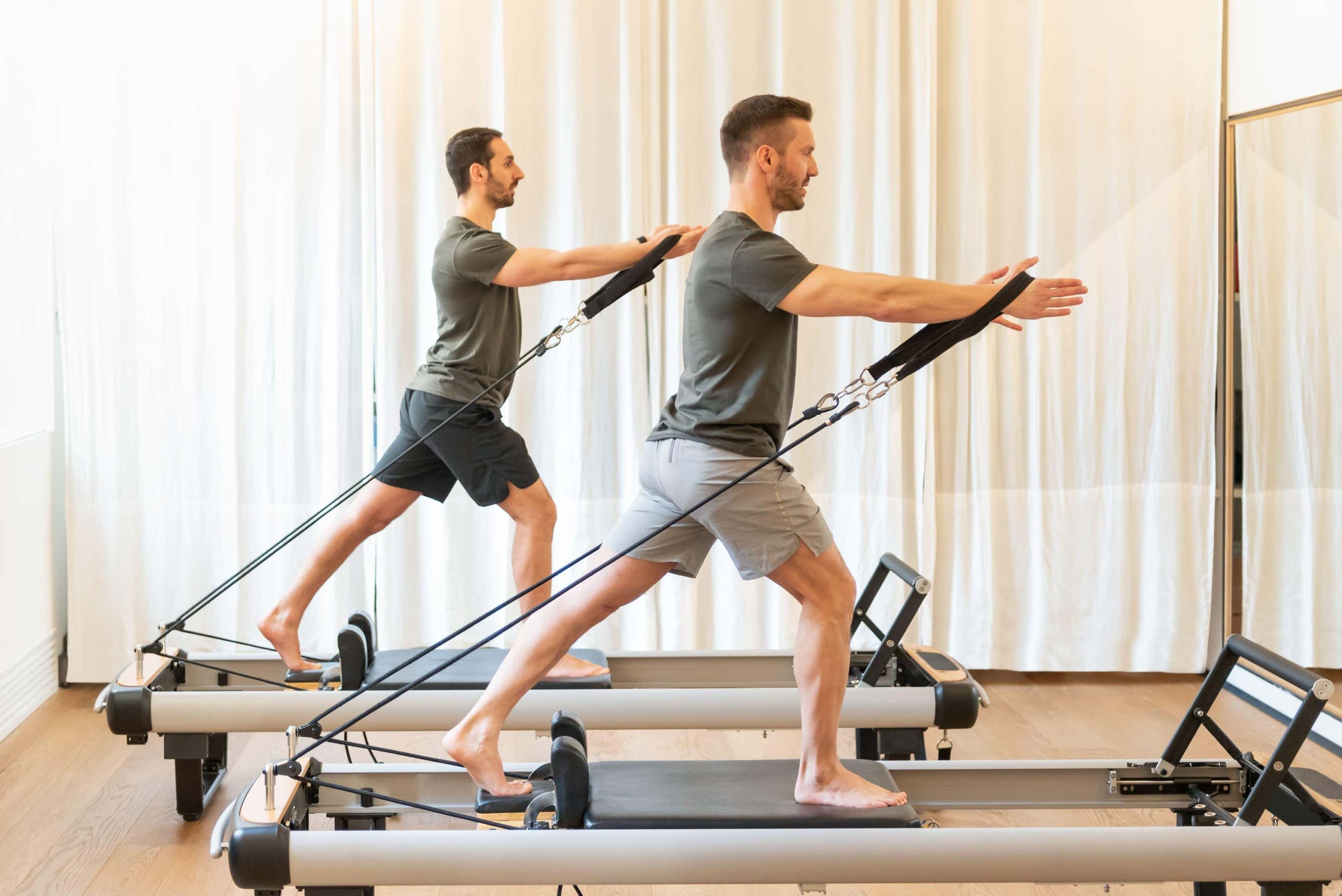Why more men should give Pilates a go – like Richard Osman
"It’s harder than it looks," says the Pointless presenter
After turning 50, Richard Osman realised he needed to find a type of exercise he actually enjoyed – and he finally settled on reformer Pilates.
“I started doing Pilates this year, which I absolutely love,” says the 51-year-old writer and presenter, who recently released his latest novel, The Bullet That Missed (Viking, £20). “It’s like exercise, but not – you’re laying down. It’s amazing.
“When you finish it, your muscles are aching. You think, wow, it’s what I’ve always been looking for – something that stretches you a lot, there’s a lot of lying down involved, but also it makes you strong.”
View this post on Instagram
Osman is such a convert, he now “heartily” recommends it to everyone else, adding: “It’s always harder than you think.”
It took Osman a while to find Pilates, however. “I’ve never really enjoyed much exercise. I like doing a bit of boxing, but apart from that, this [Pilates] is quite nice,” he says – noting he’s particularly grateful for the benefits because, at 6ft 7ins tall, his bones and joints “need protecting”.
Once the reserve of dancers, Pilates has a lingering reputation as being ‘for women’, but Osman is part of a growing trend for men giving it a go.
“It’s sometimes considered a women’s workout, because it includes mobility and stretching elements, which – stereotypically – are not key areas of focus in many men’s workouts,” says Adam Ridler, head of fitness at Ten Health & Fitness (ten.co.uk). “And it excludes heavy weights, HIIT and heavy sweating, which – equally stereotypically – are [known as more of a focus for men’s workouts],”
View this post on Instagram
But there are plenty of reasons for all genders to try it, particularly as Ridler says: “Pilates is a properly – if deceptively – challenging whole-body workout. Even with apparently simple exercises, focusing on the action itself and being precise in its execution often turns out to be a lot harder than they thought.”
It’s all about time under tension and small movements, which can really put your muscles to the test.
Benefits include “improvements in strength, muscular endurance, balance, flexibility and mobility, and well as injury prevention (it’s commonly recommended by physios for people with back pain). The last four benefits are perhaps the most relevant as they are elements that men typically undervalue in their workouts.”

Pilates has a wide range of benefits
And because of the “technical focus and immersive nature of Pilates”, Ridler says it’s “a more mindful experience than many workouts, helping relieve stress and anxiety”.
Still not convinced? “Most men find Pilates initially as an addition to their training – however, the carryover into other activities they perform is quickly apparent,” says Ridler.
“It can help men lift heavier weights in the gym, improve power and reduce injury in contact sports, improve stability and therefore speed and efficiency on the bike and track and in the pool, to list just a few examples. And from personal experience as a club and national level rower, Pilates helped me find extra boat speed.”
The Press Association
Latest posts by The Press Association (see all)
- Could brisk walking boost your heart? - April 16, 2025
- Best spring-to-summer plants to fill the colour gaps - April 15, 2025
- Catherine tells how ‘spiritual’ connection with nature gives her peace in busy world - April 15, 2025
- Why weeds are worth cultivating – and eating - April 14, 2025
- 5 top tips for cleaning your tech, from phones to laptops - April 14, 2025




















